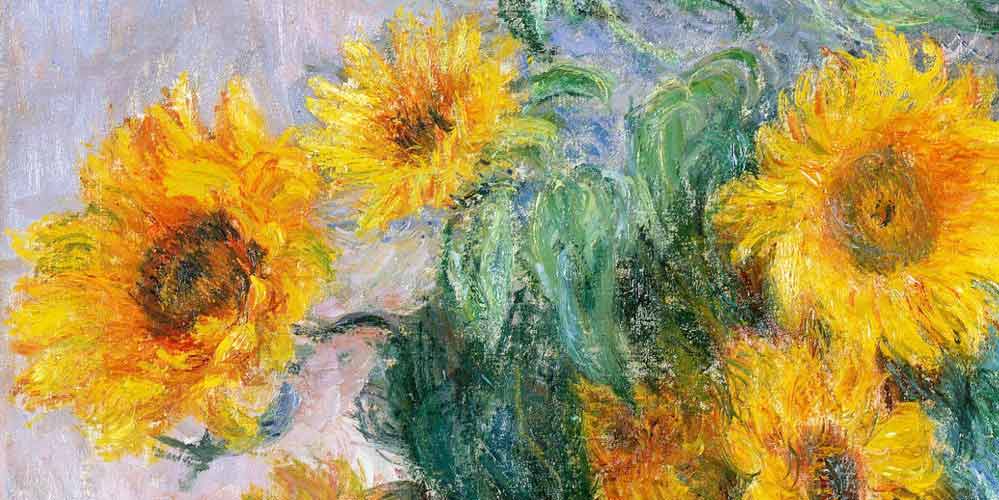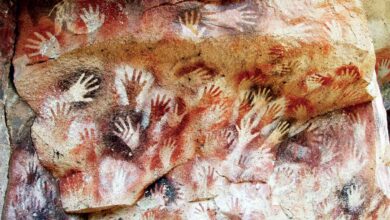History of Impressionism

Impressionism literally means immediate perception, or sensory perception. In the spring of 1874, a group of French artists under the name of the Society of Anonymous Artists came together and rented a photography studio (Nadar Studio) to display their work and put on public display about eight exhibitions, joined by Gustave Corbett in the second exhibition.
In doing so, they provoked the strongest and most hostile reactions to the Parisian art world to date, rejecting the conventional educational system and “academic” art. They also opposed the principle of romanticism, which is the most important purpose of the art of conveying the emotional emotion of the artist. On the contrary, the realists accepted the idea that the purpose of art should be to record a part of nature and life with the help of a scientific spirit and free from personal feelings. On this basis, Impressionism can be considered a logical continuation of realism in the nineteenth century. After the last exhibition, the group disbanded. Monet was the only one who continued to fanatically promote Impressionist ideas.
In 1874, with the exception of Monet, who remained loyal to the official hall, all of the group’s painters were exposed to public scorn. By 1876, seven joint exhibitions were held. In the same year, writer and art critic Duranti published a new painting, a noteworthy title, and cleverly analyzed the orientation of young painters. Through discovery and intuition, they gradually decomposed sunlight into rays and their elements, and in general harmony, the colors of the arcs and rays that they scattered on the canvas, rebuilt its unity. During the nineteenth century, the relationship between society and the artist became increasingly artificial until it finally reached its breaking point in the same exhibition of Impressionist works. Impressionism is truly the first and most important modern art movement of the nineteenth century.
Impressionism actually changed the basis of seeing in the world. In spite of all the natural and unnatural obstacles and problems, the success of the Impressionist school, in addition to its intrinsic value in providing the moral insight of its period, must be considered.
The word Impressionism is derived from the French word meaning feeling and perception and mental perception. And this great movement began in the 19th century. And it is called Impressionism because when a journalist saw an exhibition of works by great artists, he criticized one of their works called Impressionism (Sunrise) and said that this work inspires nothing in the viewer except a fleeting Impressionism. And this style came into being.
Impressionism was not a school with a set program and principles, but a free association of artists who came together because of some common ideas and in order to present their works independently. Impressionism was not just a style of painting but a new approach to art and life.
Paintings Impressionist landscape painters’ tendency to capture the “visual expression of moments” instead of the enduring aspects of their subjects forced them to provide a rich treasure by outdoor painting. And finish the panel at a point before the lighting conditions change. The play of direct and reflected light Despite these theories, all Impressionist painters, even Monet, who was the most promoter of outdoor painting, became more and more inclined to modify or retouch his work in the workshop. In doing so, he acknowledged an inherent contradiction in the Impressionist approach. Because the more sensitive the artist is to the effects of climate change, the less time he has to record it before changing it on canvas.
In October 1890, when he was working on the collection “Dry Grass”, he wrote: “I am working hard on my work and struggling with a collection of different influences, but this time of year the sun sets so much. “I can not keep up with him.”
The first nucleus of this movement was Monet, Renoir, Sicily, and Pissarro, all of whom shared a break from formal academy education. These artists first gave themselves the name “Association of Anonymous Sculptors and Engravers”. But later, the name of one of Monet’s paintings, The Impression of the Sunrise, prompted the young critic Louis Leroy to call the whole group Impressionists in Charivari magazine. The name, which was coined in a mocking tone, was later accepted by the band’s own artists as a testament to at least one of the salient aspects of their goals. In their paintings, they were painted not in gray and black, but in complementary colors.
We are not talking about the art of painting, we are talking about communication. As you know, painting is not just a painting, but a bridge between thoughts, and the painter says that he goes through pains and hardships in order to realize his thinking and society in a better way, and to be a consolation to his peers.
A work of painting is created by visual elements and technique, but most of its value is due to its thinking, and the painter is the creator of the work by thinking about it and creating creativity in the work.
Renoir took a big step in this direction by “painting the rainbow”, removing dark colors from shadows, removing the border lines of objects. Thus, landscape painting became an art in which the painter tried to recreate the image reflected on the retina and create the equivalent of the vivid quality of the radiant landscape with the help of colors. He mixed pure shades, but did not completely ignore the local colors. He showed the shadows not with gray and black colors but with the help of complementing the colors of objects.
With the removal of border lines, the distinctive feature of the shape of objects disappeared, and Impressionist paintings became images of light and atmosphere, and games of direct and reflective colors. In later years, Monet continued to analyze visual perceptions carefully. Pissarro was drawn to the theory of neo-impressionism. But by emphasizing linear design, Ronvar achieved a subtle style in the portraiture of naked women. The habit of painting under the shining sun, using pure shades to convey the light of nature, and applying single brush strokes on canvas was typical of the Impressionists themselves. By “underestimating the lines of objects” they took precedence over the properties of objects, and Impressionist paintings became the color of light and space. In fact, the Impressionist painter was guided exclusively by his personal discovery and intuition, relying only on his honesty, and each of his works, as a creative work, was a proof and rediscovery of painting.
In his view, the world did not live in a fixed form once and for all. Yes, by all accounts, it was rediscovered recently, and its slightest appearance was part of its changing beauty. What could such freedom do other than anger the people of that time?
In the 1890s, Impressionism spread throughout Europe and then spread to the United States. But as the principles of Impressionism became established, there were reactions against it, and Impressionist painting was initially met with ambiguity and ridicule. Simultaneously with the second exhibition, a critic wrote: Five or six psychics have gathered here to show their work … It is a terrifying show that human futility reaches the brink of madness. Someone should tell Mr. Pissarro that dear Mr.! Trees are never purple! “The sky is never the color of fresh butter, that nowhere in the world can you find the things they have painted on their paintings!”
People who were frozen by the School of Fine Arts (as a manifestation of social petrification). Even when Jerome (the painter) accompanied the president to the booths of the 1900 Paris International Exhibition, he told him in front of the Impressionists “Your Excellency, there are incompetent people in France here.”
The reception of the Impressionists in England was slow. But since the death of Monet, the great French painter, in 1926, auction prices for Impressionist paintings have risen, and since the 1950s they have turned to astronomical figures. So little is known about modern art theory that it was not based on the discovery of the Impressionist color. The influence of the Impressionists was enormous, and much of the history of painting in the late nineteenth and early twentieth centuries was the story of the development of movements influenced by or against it.
Impressionism in Cinema and Photography
In this style, they believed in a kind of visual aesthetics in the art of cinema and photography. The Impressionists opposed storytelling in the usual way in cinema and rejected any kind of story, but in practice were less loyal to it; in fact, their films were free from the clutches of everyday issues. Known as the “father of French film criticism”, Deleuze believed that the constituent elements of cinema were: light, decor, rhythm and mask (meaning actors).
The Impressionists generally believed that the rhythm of the film had a power that could evoke a dream. And this dreaminess was manifested in photographs in this way by interfering with the photographer. During this style, special physical characteristics appeared in photography and cinema, such as: play of light and shadow, movement (in cinema) and soft visual rhythm (in photography), brief attitude to objects (in both) and inductive power in cinematic images. grow up. The main goal in this style was not to create order. Rather, the goal was to achieve existing but invisible thoughts and feelings and to achieve a kind of subtle impressionism in the film.
Neo Impressionism
In Surah’s last works, the “sting of the pens” becomes a dot of wrinkles or a delicate process of radiant color that, according to the painter’s scientific theory, must blend together in the eye of the beholder so that the sub-colors are much brighter than when mixed. Colored material is created on the thumbnail.
This style of painting has been called Neo-Impressionism, Pointillism, and Divisionism.
The Neo-Impressionists tried to build the visual principles of Impressionism on a scientific basis, and the Post-Impressionists initiated a long chain of movements that sought to free color and line from its purely representative functions and return it to sensory and symbolic values. Which the Impressionists devoted their emphasis to the element of time and the brief.
Vincent Van Gogh (1853-1890) (the first great Dutch painter) took the opposite path when Cézanne and Sora set out to replace Impressionism with a newer, more Stuartist classical style because he felt that the school of Impressionism was still in its infancy. The painter did not give him the freedom to express his emotions as he should. And since Van Gogh’s main claim was to express emotions with an expressive expression, some artists have considered him a painting of the school of expressionism (explanation of future chapters) or excitement.
A review of the research literature or the history and past of the Impressionist style
Impressionism, which divides the world into light and divides it into different colors. And because it records chains of sensory perceptions, it increasingly expresses the relationship between the very complex mind and the lack of durability of a person trapped alone and immersed in the world as a series of neural reactions to perceptions and Roman states such as ( Portalo’s turmoil (because he sees experience (I)) Impressionism in view is consistent with self-sacrifice. In philosophy, he also considers the world as experience (I) and feeling (I). Not an objective reality that exists independently of our individual feelings. The element of rebellion in Impressionism is barred by the existence of another element, that is, by the skeptical, elusive, non-militant individualism, and the way of thinking that deals with its own perceptions and does not change the world.
Painting became a major art in the second half of the nineteenth century. While the world of literature was still struggling over naturalism, Impressionism evolved into an independent style. The first group exhibition of the Impressionists was held in 1874, but the history of Impressionism began eight years earlier. It ends in 1886. Around the same time, Impressionism is a unified group movement, and a new era begins (after Impressionism). Until 1906, Impressionism did not end abruptly, nor did it begin abruptly. One of the Impressionist painters who discovered the law of complementary colors and coloring of shadows, the introduction of the trend of open air in Barbican painters offers the next step in this evolution.
Impressionism was more of a subtle, aristocratic, nervous, sensitive, sensual style. He was fascinated by rare and exquisite subjects tending to purely personal experiences, experiences of loneliness and isolation, and feelings very sensitive to nerves. Impressionism, however, is the invention of artists who, not only do most of them come from the lower and middle parts of the zodiac, but deal much less intellectually and aesthetically than artists of previous years. They are less open-minded and sophisticated than their predecessors.
The Impressionists used broken color symbols. Large uses of solid color and heavy schemes. Direct drawing of ferrules of pure color to induce energy and use of smooth surfaces for auxiliary analysis were new. For the Impressionists, their method of vision based on their theory of light was as specific as In front of which they spread their paintings, it became important.
Impressionist painting style is called direct style. The point is that painting, without a preliminary study and preparing experimental designs, brings what it sees directly onto the canvas by matching colors and shades. This style of painting has a long history. In order to solve the problem of lack of pure and bright colors in the works of earlier painters, the Impressionists came to the conclusion that they should distinguish between the local or (natural) color of objects and the color that can be seen from objects. They not only emphasized the value of color shades, but also the interaction of colors on the canvas. The shadow areas no longer looked black or brown, but consisted of colors contrasting with the colors of the light zones, thus complementary colors, names that are on the same diameter in the Newtonian color wheel and show their interaction in their paintings. And now it became very important to the Impressionists.
In fact, the Impressionists returned to Newtonian theory, or to be more precise, they discovered the points and the problem of color, which was in fact Newton’s theory to the practical field of color, in their visual experiences. Here we see that the works of the Impressionists can be seen entirely from their dark inverted colors in the matching of complementary colors that accurately describe their quality in their letters.
First, the desired colors are placed on the painting board and then they are placed on the canvas in the form of thick clots. Distinct twisting strokes make them look like a mosaic of pieces of paint. Short, sharp strokes delineate and replicate the details of the problem. And like waves of water, it spreads from the center of each shape around to reach other parts of the image.
Today, the term Impressionism is not only widely used in the language of art critics and enthusiasts, but in a broader sense, it evokes paintings in bright colors. In recent times, viewers have described these works as (traditional) and sometimes old masters, while more than a century ago, they considered the efforts of these (strange) artists and an insult to the painting profession. But one of Monet’s scenes, entitled Impression: (Sunrise), caused a great deal of controversy.
His paintings called these painters stage (Impressionists). This painting expressed the style of many Impressionist painters, so the definition of Impressionist painters does not analyze the problem, but only receives the light that is reflected from the problem on the retina. The Impressionists paid much more attention to urgency than to previous painters, that is, the quality of sudden revelation and subject matter. In Impressionist painting, nonsense of the whole subject occurs unintentionally and in a hypocritical state.
Although the final stage of the Impressionist curtains was often performed in the workshop, their overall quality indicates the painter’s approach to the subject. In addition, in order to paint a colorful light that reflects the colorful objects of the world around them, the Impressionists smashed the surface of the canvas with thousands of pieces of color and blurred the borders. These innovations require ignoring the stability of forms. When the whole image becomes an area of color harmony and special effects of light, there is no solid structure and linear pattern of shapes. Thus the Impressionist abandons exponential volume and even design.
Peswar advised his students to find only the right shades and colors and to strike the canvas with short strokes of the brush. He forbade his students to emphasize precise linear design because he believed that design prevented general impression and wasted emotion.
The Impressionists tried to give the viewer the idea of shapes in the midst of a new sea and air. This required a deep study of light as the source of our sense of color. And it revealed the important fact that the local color, and the true color of any object, often changes due to the type of light that surrounds it due to the reflection of light from other objects and the effect of adjacent colors. For example, complementary colors greatly enhance each other if they are used side by side in large areas. But they mix in small amounts and become neutral. Contrary to many previous painters’ beliefs, shadows do not look gray or black, but rather a combination of colors that have been altered by reflections or other factors.
Georgiolo defined Impressionism in 1877 as follows: Dealing with the subject on the basis of color shades and not because of the subject itself. On the other hand, the Impressionist method involves a series of reductions, a system of limitations and simplifications. His example in Impressionist painting is that It finds it looked from a certain distance. And when viewed from a distance, he describes things in terms of their inevitability. The series of reductions it applies begins with limiting representation factors to purely visual elements. Which removes anything that is non-visual in nature or cannot be translated into visual terms.
Understanding the school of Impressionist painting requires familiarity with the principles and principles that were popularized in this field of art by some artists just before the emergence of Impressionism. The Impressionists signify the independence of speech and language. However, these principles and principles, rather than expressing themselves in language, deal with the state of a symbol of reality that is deeply ingrained in self-awareness and ultimately denies any kind of mental and mythical modernism.
Impressionism is a school through which human existence has been able to bring nature to the perspective that it saw and felt.
This school, which was free from any kind of problem-solving and transformed from the point of view of the viewer, eventually turned painting into a desirable supply of freedom. The Impressionist was able to attract a huge crowd. They all hated the unstable moral rules and vain mindsets of the middle class. When the Impressionists were conquering the light in the face of very blind and at the same time very beneficial resistance, there were movements around their movement as well, without their knowledge and in their very existence. These movements were either in line with the Impressionists, or they had begun, or they were forming, or they had even reached the end.
Impressionism is a light-dependent style, in which artists begin to paint at a specific time, and when the sun shines on the object, they quickly draw it with the same light spectrum, and if the sunlight decreases or increases after a few minutes, the hand They stopped working and completed the rest of the painting themselves, and the Impressionist style is in terms of light, and all the painters of that style worked with light, and we find our hypothesis that the Impressionist style is a light style based on light sources.
Is Impressionist style a superior style? The answer to this hypothesis is: No. Because there are countless styles that are superior to the Impressionist style, if we want to compare it with other styles, yes, it is a new style that the artists themselves have created innumerable creativity. And by placing stones on the canvas and placing pieces of canvas paint, they have created a new style and it is very diverse and happy.
Is the Impressionist style a style with flaws? Yes. The Impressionist style had certain disadvantages. After a while, the painters of that period removed the dark color from their palette and used light colors. And they continued to paint as long as the light shone on the landscape. As soon as the light was low or high, they stopped working and did the rest of their work without a view and in their workshop. And in the beginning of this style, no one accepted this method of painting.
The result is that Impressionism is a new style. This style was light-dependent, meaning that as long as the sun shone, you could see the subject that the painter wanted to paint. And until the light becomes less, more or less, stop working and do the rest of your work in your homes or workshops. Impressionist artists decided to remove dark colors from their palette and use the latest happy colors and the colors of the arc instead of black or dark grays. Impressionist artists were realistic and brought everything they saw to the canvas. And they played the role that most of their subjects were nature and they drew from mountains, streams, flowers and waterfalls or when people were having fun in nature in the canvas. The Impressionist painter was not only a member of the aristocracy, but also drew drawings of all ordinary people, and aristocratic paintings are rarely seen in their work. In the Impressionist style, great painters grew up and continued to work. Painters whose style and painting are still based on languages after many centuries and many years, such as: Cézanne, Van Gogh, Delcabroo, Manet, etc.
* Sources and references are available in the editorial office of Artmag.









